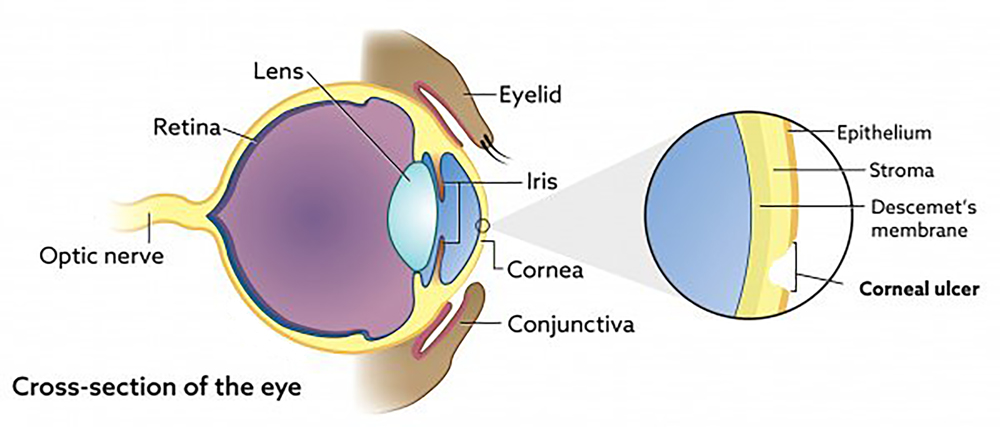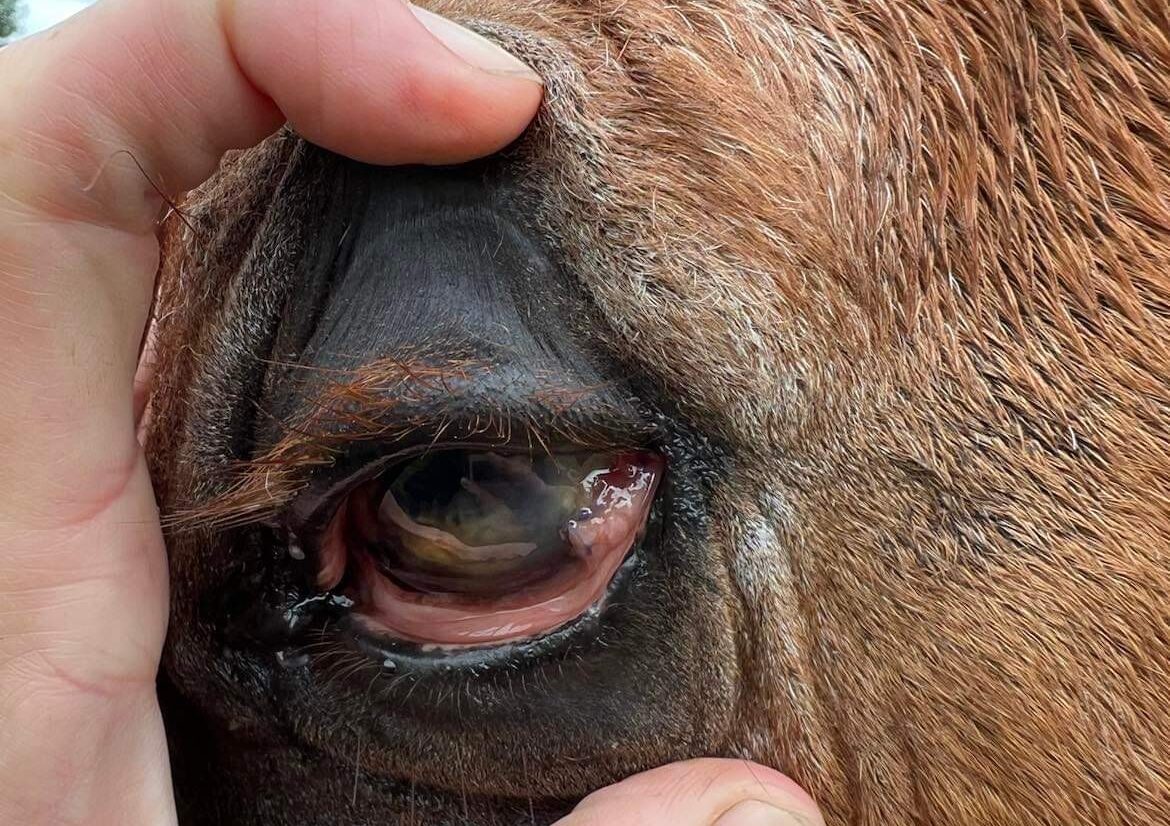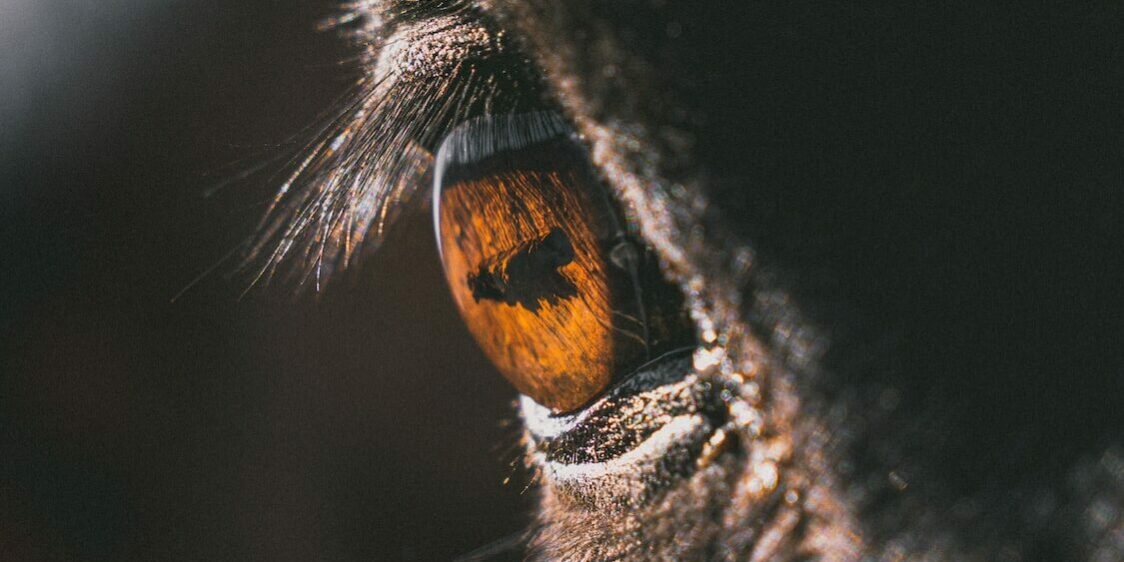Renae Griffin, Vet Services Hastings
Late last year we were called out to check on Miracle Boi after his owner noticed a gunky discharge from his left eye, which he was squinting shut. Upon examination of the eye, our veterinary team diagnosed a descemetocele and needed to act quickly to save his eye.
What is a descemetocele?

The cornea is the clear, superficial layer of the eye that covers the iris (coloured part) and the pupil. Between the cornea and the deeper structures of the eye is a thin layer called the descemet membrane. A descemetocele is the term used when the overlying corneal layers are damaged, either by injury or infection, and only the descemet membrane remains intact.
A descemetocele is a serious condition because there is only a thin layer of tissue left to keep the eye intact, and if this ruptures then the eye ruptures. Often a combination of surgery, regular eye medication and pain relief is required to save the eye. We always recommend specialist care if eye surgery is involved. In Miracle Boi’s case, referral care wasn’t possible so our VS Equine veterinarian Renae Griffin performed surgery to try save the eye.
Miracle Boi’s surgery
A conjunctival graft surgery involves cutting a piece of the conjunctiva (pink tissue at the edge of the eye) to create a flap covering the descemetocele (ulcer). The graft is then sutured to the cornea to hold it in place. This conjunctival graft is not only for structural support, it provides a blood supply, containing important healing and infection-fighting properties to the area.

The conjunctival graft was a great success and over the following weeks under the dedicated care of his owner, Miracle Boi’s eye made a full recovery and he is reported to be back to his usual self.
Pictured above: Miracle Boy’s eye 10 days post conjunctival graft
A sore eye is a common call for our veterinary team – and the most common cause of a painful eye is corneal ulceration. The cornea in horses is approximately 1mm thick and can be easily damaged. Eye trauma can be from all sorts of causes; a knock to the head, rubbing, fly irritation, scratches from hay or even a foreign body like grass seed. While most superficial ulcers should heal with minimal scaring, eye injuries can rapidly become inflamed and infected – which is considered an emergency.
If you want to find out more or have any concerns about your horse please give us a call on (06) 876 7001.




